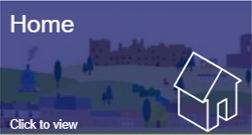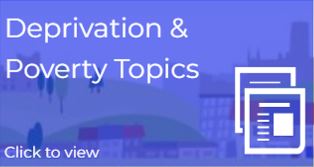 |
 |
|---|
Children in low income families: local area statistics
These experimental Official Statistics on the number (and proportion) of children living in low income families across Great Britain by local area were first released in the March 2021.
Interactive Map: Poverty by Sub-county areas
Additional Analysis: Children in Poverty After Housing Costs (End Child Poverty Coalition)
NOTE: DWP have advised caution when comparing the latest two years of data with previous years as some of the data sources were affected during COVID due to difficulties in collection. The data suggests that child poverty in the North East and its 12 local authorities, has fallen. Local free school meal data, (a good proxy measure for poverty), in County Durham has continued to rise. Further details can be found on the Free School Meals page.
Further details can be found on the GOV.UK website.
Children in low income families Dashboard
Key Messages (Children aged 0 to 19) 2023/24
Relative Poverty (Provisional Estimates)
Current: 27.2% (31,000 children estimated) of children under the age of 19 were estimated to be living in relative poverty (NE: 27.6%; England: 21.9%)
-
-
-
- The current release estimates that the proportion of children in relative poverty in the county has continued to increase and, along with the North East the proportion remains above both areas, remains above national levels.
- In the financial year 2023/24 an estimated 27.2% of children under the age of 19 were living in relative poverty in County Durham (28.8% of under 16’s). The North East was similar at 27.6% while nationally (England) the figure was lower at 21.9%.
- This is an increase from 19.3% in 2014/15, with the number of children in living in relative poverty rising from an estimated 21,800 (aged children under 19) to around 31,000, an increase of 42%.
- Across the North East the number of children in relative poverty increased by 45%, while across England the figure increased by 41%. This suggests that the gap between County Durham/North East and England is widening.
-
-
Absolute Poverty (Provisional Estimates)
Current: 23.3% (26,600 children) of children under the age of 19 were estimated to be living in absolute poverty (NE: 23.7%; England: 19%)
-
-
-
- The current release estimates that the proportion of children in absolute poverty in the county has continued to increase and, along with the North East the proportion remains above both areas, remains above national levels.
- In the financial year 2023/24 an estimated 23.3% of children under the age of 19 were living in absolute poverty in County Durham. Across the North East the figure was slightly higher at 23.7% while nationally (England) the figure was 19%.
- This is an increase from 18% in 2014/15, with the number of children in living in absolute poverty rising from an estimated 20,300 (aged children under 19) to around 26,600, a rise of 31%.
- Across the North East the number of children in absolute poverty increased by 34%, while across England the figure increased by 31%. This suggests that the gap between the North East and England is widening.
-
-
Definitions and Links
Links
Definitions
| Term | Definition |
|---|---|
| Children | Dependent individuals aged under 16; or aged 16 to 19 in full-time non-advanced education. Figures on the proportion of children living in low income families are derived for children under 16 as a percentage of the under 16 population. |
| Family | A single adult; or a married or cohabitating couple; or a Civil Partnership; and any dependent children. |
| Equivalised income | Income is gross income Before Housing Costs (BHC) and includes contributions from earnings, state support and pensions. Equivalisation adjusts incomes for family size and composition; taking an adult couple with no children as the reference point. |
| Relative low income | A family in low income Before Housing Costs (BHC) in the reference year. A family must have claimed one or more of Universal Credit, Tax Credits or Housing Benefit at any point in the year to be classed as low income in these statistics. |
| Absolute low income | A family in low income Before Housing Costs (BHC) in the reference year in comparison with incomes in 2010/11. A family must have claimed one or more of Universal Credit, Tax Credits or Housing Benefit at any point in the year to be classed as low income in these statistics. |
| Work status | A family is defined as ‘in-work’ if they have an accumulated period of at least 26 weeks paid employment or self-employment within the 52-week tax year. |
| Family type | Family type accounts for changes in family composition throughout the year (for example, re-partnering, multiple partners). A Lone Parent family type means the parent/guardian has had no partnerships at any point in the year. |
Relative v Absolute Poverty
The 2 most common measures of poverty (produced by the DWP) are Absolute and Relative.
These are most often used together to provide a more nuanced view of poverty. Whilst both measures offer valuable insights in the economic wellbeing of our residents they do not provide a complete overview of overall poverty and should be viewed alongside other relevant measures relating to economic wellbeing. This is certainly the case in our various poverty related resources on Durham Insight. Both of these low-income measures are calculated and reported either Before Housing Costs or After Housing Costs. NB. The Department for Work and Pensions is now developing the ‘Below Average Resources’ statistic as ‘Official Statistics in Development’ to provide a new additional measure of poverty based on the approach proposed by the Social Metrics Commission in 2018.
An individual is considered to be in Relative poverty it they are living in a household with an equivalised income below 60% of the UK median income in the year in question. This is a measure of whether those in the lowest income households are keeping pace with the growth of incomes in the population as a whole. Relative poverty can help identify inequality and social exclusion within society at any given time.
An individual is considered to be in Absolute poverty if they are living in a household with an equivalised income below 60% of the (inflation adjusted) UK median income in 2010/11. This is a measure of whether those in the lowest income households are seeing their incomes rise in real terms. i.e. whether the lowest income households have experienced real income growth over time. Absolute poverty helps monitor whether people’s basic living standards are improving over time.
Interpreting low-income measures
Relative poverty sets the threshold as a proportion of the average income and moves each year as average income moves. It is used to measure the number and proportion of individuals who have incomes a certain proportion below the average.
The percentage of individuals in relative poverty will increase if:
-
- the average income stays the same, or rises, and individuals with the lowest incomes see their income fall, or rise less, than average income; or
- the average income falls and individuals with the lowest incomes see their income fall more than the average income.
The percentage of individuals in relative poverty will decrease if:
-
- the average income stays the same, or rises, and individuals with the lowest incomes see their income rise more than average income; or
- the average income falls and individuals with the lowest incomes see their income rise, or fall less, than average income, or see no change in their income.
Absolute poverty sets the low income line in a given year, then adjusts it each year with inflation as measured by variants of the CPI. This measures the proportion of individuals who are below a certain standard of living in the UK (as measured by income). .
-
- The percentage of individuals in absolute low income will increase if individuals with the lowest incomes see their income fall or rise less than inflation.
- The percentage of individuals in absolute low income will decrease if individuals with the lowest incomes see their incomes rise more than inflation.
Absolute poverty is sensitive to inflation and economic conditions. It reflects changes in purchasing power and cost of living. For local authorities, this measure provides a direct link to economic policy impacts. They can monitor how inflation affects the poorest segments of the population and adapt their strategies accordingly
A hypothetical example of this dual approach could be: Absolute poverty among pensioners drops over a decade due to inflation-adjusted pension increases and support programs. But relative poverty among working families rises due to stagnant wages and increasing housing costs, even though incomes haven’t technically fallen.
There are pros and cons of using both Absolute and Relative measures of poverty. Which is generally why they’re often used in tandem with one another.
| Absolute Poverty | |
| Pros | Cons |
| Objective Standard: Absolute measures provide a fixed benchmark, making it easier to track changes over time. | Economic Sensitivity: Absolute poverty is highly sensitive to inflation and economic conditions, which can fluctuate unpredictably. |
| Inflation Adjustment: Adjusting the threshold for inflation helps maintain a consistent standard of living. | Static Threshold: A fixed threshold may not account for regional variations in cost of living. |
| Policy Monitoring: Helps local authorities evaluate the effectiveness of economic policies and their impact on purchasing power. | Limited Scope: It may not fully capture the broader aspects of economic inequality beyond basic necessities. |
| Targeted Assistance: Facilitates the design of focused support programs for the most vulnerable populations. | |
| Relative Poverty | |
| Pros | Cons |
| Economic Equality: Relative measures highlight income disparities and help address wealth distribution. | Relative Benchmarks: The benchmarks change with overall income shifts, making long-term tracking more complex. |
| Adaptability: They adjust to changing economic conditions, providing a dynamic view of poverty. | Potential Misinterpretation: Rising average incomes might mask issues faced by the lowest earners if their income does not rise proportionately. |
| Community Focus: Assists in pinpointing areas needing social and economic interventions by comparing median incomes. | Income Disparity Focus: May overlook individuals who meet relative thresholds but still experience financial hardship. |
| Policy Effectiveness: Enables local authorities to evaluate and adjust social policies to promote equitable wealth distribution. | |
